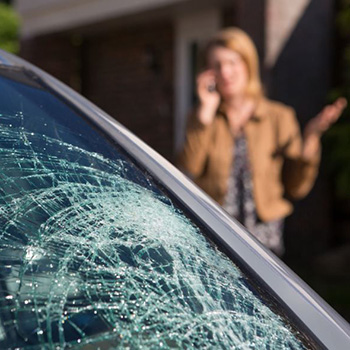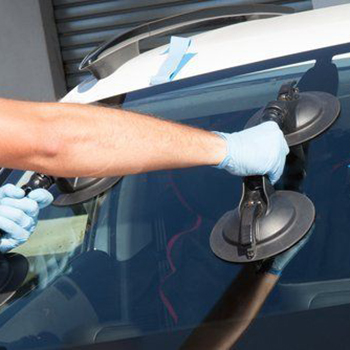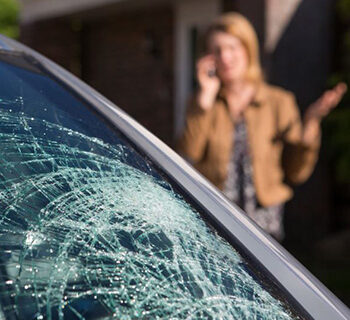Can That Crack in My Windshield Be Fixed?
A crack in your windshield is more than just a blemish on your vehicle; it’s a safety concern that can affect visibility and the structural integrity of the windshield. But not all windshield damage necessitates a full replacement. Depending on various factors, such as the size, type, and location of the crack, repairs may be possible, saving you time and money. This article delves into understanding the nature of windshield cracks, how they are assessed, the options for repair, limitations and safety considerations, and insights into cost and insurance coverage.

Comprehending the Nature of the Crack
Windshield cracks can vary widely, from small chips to long cracks. The type of crack can significantly influence the repairability of the windshield. Common types include:
- Bullseye: Circular cracks, usually caused by a rock hitting the windshield.
- Star Break: Short radial cracks emanating from a central point, resembling a star.
- Crack Chip: A small crack, typically less than 1 inch in diameter.
- Long Crack: Any crack over 6 inches in length.
The location of the crack will also indicate how you should treat it. Cracks at the edge of the windshield are more likely to compromise its structural integrity, while those in the driver’s line of vision might require replacement due to safety regulations.
Process of Assessment
The first step in addressing a windshield crack is a professional assessment. This evaluation determines whether the windshield can be repaired or needs to be replaced. The criteria for this decision often include:
- Size: Generally, chips smaller than a quarter and cracks up to three inches long can be repaired.
- Depth: If the damage penetrates through the windshield’s inner layer, replacement is necessary.
- Location: Damage in the driver’s line of vision or near the windshield’s edges often requires replacement.
Options for Repair
Repairing windshield cracks is crucial for maintaining the structural integrity of the windshield and ensuring clear visibility while driving. The method chosen for repair often depends on the size, type, and location of the crack. Here are some common methods for repairing windshield cracks:
1. DIY Repair Kits
DIY windshield repair kits are available at most auto parts stores and online. These kits are most effective for small cracks and chips, such as bullseye, star breaks, or small cracks less than a few inches long. The kits typically include:
- A resin that fills the crack,
- An applicator to insert the resin into the crack, and
- A curing strip or film to finish the repair.
The process involves cleaning the glass around the crack, applying the resin into the crack using the applicator, and then placing the curing strip over the resin to let it dry and harden. UV light, often from direct sunlight, is required to cure the resin properly.
2. Professional Windshield Repair Services
For larger cracks or those in critical viewing areas, professional repair services are recommended. Professionals use advanced techniques and materials to ensure a high-quality repair. These services can often repair cracks up to 12 inches long, but the feasibility depends on the crack’s location and severity. Professional repair methods include:
- Injection and Curing: Similar to DIY kits but with higher quality equipment and resin, professionals can more effectively remove air from the crack and fill it with resin. The resin is then cured under UV light to restore the windshield’s integrity.
- Drilling: In some cases, a small hole may be drilled at the end of a crack to prevent it from spreading before the resin is injected.
3. Pre-Treatment and Aftercare
- Cleaning: The area around the crack is thoroughly cleaned to remove debris and moisture that could interfere with the repair.
- Moisture Removal: If there is moisture in the crack, professionals may use a method to extract it or apply heat to dry the area before proceeding with the repair.
- Aftercare: After the repair, it is often advised to keep the windshield in a stable environment for a certain period to allow the resin to cure fully, ensuring the repair’s durability.
4. Replacement
If a windshield crack is too large, in the driver’s critical viewing area, or the windshield is damaged in multiple places, replacement might be the only safe option. Professional assessment is crucial in these cases to ensure the vehicle’s safety. Here are some things to consider:
- Type and Location of Crack: Cracks at the edge of the windshield or those that have spread significantly are more likely to require replacement due to the risk of compromising the windshield’s structural integrity.
- Timeliness: Addressing cracks as soon as they occur can prevent them from spreading and becoming more problematic and expensive to repair.
- Insurance Coverage: Many insurance policies cover windshield repair and sometimes replacement, depending on the policy’s terms. It’s worth checking your coverage before deciding on a repair approach.
Safety is the primary concern when dealing with windshield damage. While small cracks can often be successfully repaired, ensuring the repair maintains the windshield’s integrity and doesn’t obstruct the driver’s view is essential. For significant damage, professional evaluation and possibly replacement are the safest options.
Limitations and Safety Considerations
While many windshield cracks can be repaired, there are limitations. Extensive cracks or those in critical areas may require replacement for safety reasons. A compromised windshield can affect the vehicle’s roof structure integrity in a rollover accident and impair the deployment of passenger-side airbags, which rely on the windshield for support.
Cost and Insurance Coverage
The cost of windshield repair vs. replacement varies widely. Repairs are significantly cheaper, often ranging from $60 to $100, while replacements can cost between $200 and $1,000, depending on the vehicle make and model. Many insurance policies cover windshield repair and replacement, but the coverage details, such as deductibles and whether repair impacts your premiums, can differ. It’s advisable to check with your insurance provider to understand your coverage.
Conclusion
A crack in your windshield doesn’t always spell the need for a costly replacement. Understanding the nature of the crack, coupled with a professional assessment, can reveal repair options that are both safe and cost-effective. However, safety should always be the paramount consideration. If there’s any doubt about the windshield’s integrity post-repair, replacement is the prudent choice. Lastly, consulting with your insurance provider can help mitigate the financial impact, whether you opt for repair or replacement.
Choose Baker Glass
Offering a comprehensive warranty on all windshields, our expertly trained and certified technicians stand ready to meet your windshield replacement requirements. At Baker Glass, we not only welcome a wide range of insurance plans, but we also prioritize using the highest quality materials available to guarantee superior auto glass replacement. We are dedicated to surpassing your expectations and upholding the highest standards of safety for every windshield installation. Whether it’s for cars, trucks, or RVs, trust in our prompt and courteous service. We also provide the convenience of mobile windshield replacement services. Contact us today to find out more!
““


